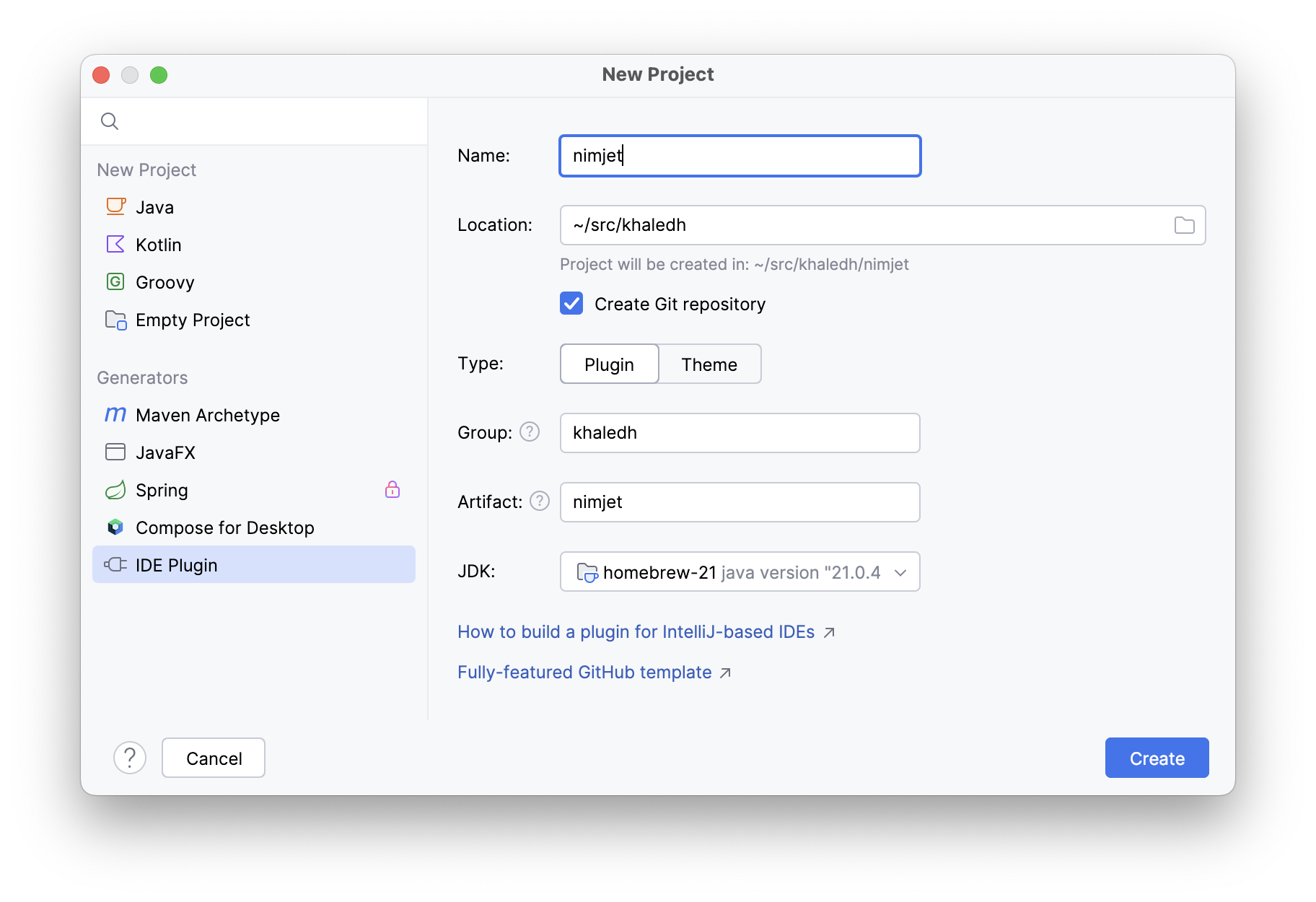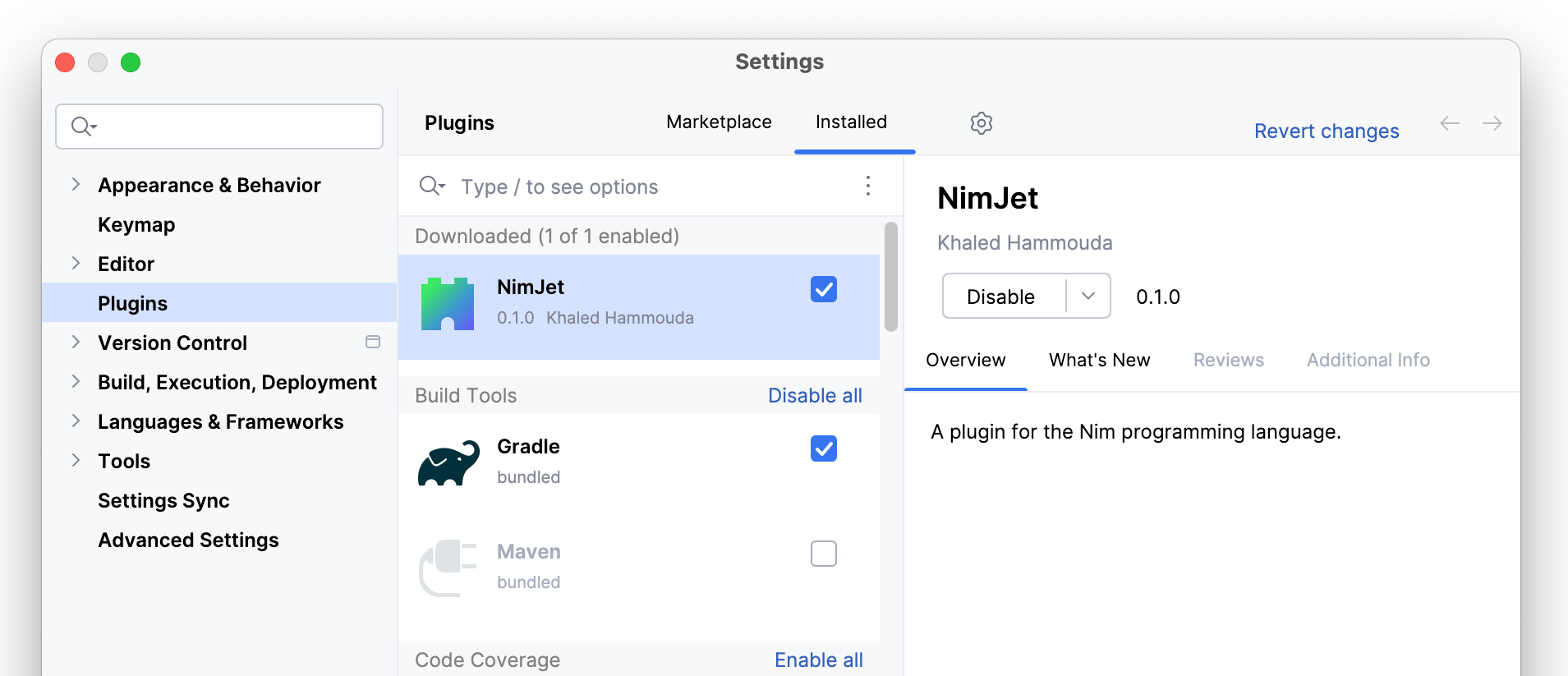Project Setup
Let's go ahead and install the requirements:
- IntelliJ IDEA Community Edition
- Plugins:
- Gradle (comes bundled with IntelliJ)
- Plugin DevKit
- Grammar-Kit
Since we're going to target IntelliJ Platform 2024.2+, we'll need Java 21. On my macOS machine, I installed it using homebrew:
$ brew install openjdk@21
New Plugin Project
Because we installed Plugin DevKit, we can now create a new project of type IDE Plugin.

Unfortunately, the new project by default targets IntelliJ IDEA 2023.2 (using Java 17), and uses the IntelliJ Grade plugin version 1.x. We need to update the project to target IntelliJ IDEA 2024.2 (using Java 21) and use the IntelliJ Gradle plugin version 2.x. For this, we'll need to replace the build.gradle.kts file with the following:
// build.gradle.kts
plugins {
id("org.jetbrains.intellij.platform") version "2.0.1"
id("org.jetbrains.kotlin.jvm") version "2.0.20"
}
repositories {
mavenCentral()
intellijPlatform {
defaultRepositories()
}
}
dependencies {
intellijPlatform {
intellijIdeaCommunity("2024.2.1")
instrumentationTools()
}
}
intellijPlatform {
buildSearchableOptions = false
}
Here's a breakdown of the changes:
- We updated the IntelliJ Platform Gradle plugin to version 2.0.1.
- We updated the Kotlin plugin to version 2.0.20.
- We added the
intellijPlatformblock underrepositoriesto add thedefaultRepositories()to the project. - We updated the
intellijPlatformblock underdependenciesto target IntelliJ IDEA 2024.2.1. We also added theinstrumentationTools()dependency to instrument the compiled code (like nullability assertions). - We added the
intellijPlatformblock at the end of the file to configure the plugin build. For now, we only disabled building searchable options (which we don't need for now).
We can now tell Gradle to reload the project from the Gradle tool window. Gradle will then download the configured Gradle plugins, and all the declared dependencies, including an IDEA Community Edition 2024.2 sandbox. It takes a while to download everything and index the dependencies, so be patient.
Plugin Configuration
Plugins have an XML-driven configuration file called plugin.xml, stored under the src/main/resources/META-INF directory. It contains metadata about the plugin, such as the plugin ID, name, version, and description, as well as registrations for extension points that the plugin implements.
Let's update the plugin.xml file to reflect the details of our plugin:
<!-- src/main/resources/META-INF/plugin.xml -->
<idea-plugin>
<id>khaledh.nimjet</id>
<name>NimJet</name>
<vendor email="..." url="...">Khaled Hammouda</vendor>
<description><![CDATA[A plugin for the Nim programming language.]]></description>
<version>0.1.0</version>
<!-- plugin dependencies on core modules -->
<depends>com.intellij.modules.platform</depends>
<depends>com.intellij.modules.lang</depends>
<extensions defaultExtensionNs="com.intellij">
<!-- extension point registrations go here -->
</extensions>
</idea-plugin>
The <depends> elements declare the compatibility of the plugin with the IntelliJ Platform products.
- The
com.intellij.modules.platformdependency is required all plugins to indicate dependency on shared functionality. - The
com.intellij.modules.langdependency indicates dependency on the platform module that provides language support (e.g. syntax highlighting, code completion, etc.).
Running the Plugin
Although we haven't written any code yet, we can still run the plugin to see if everything is set up correctly. To run the plugin, we trigger the runIde task from the Gradle tool window under Tasks > intellij platform > runIde.
We should be presented with a new instance of IntelliJ IDEA 2024.2 with our plugin loaded. Let's create an empty test project and verify that our plugin is loaded by checking the Settings | Plugins dialog:

Great! We can see that our plugin is loaded and enabled, although not doing anything at the moment.
Tips
When you close the sandbox project, the IDE doesn't completely close. Instead, it goes back to the welcome screen, which needs to be closed as well. Moreover, when you run the sandbox IDE again, it will show the welcome screen instead of the last project you had open. To avoid this, when you are in the project, quit the IDE using Cmd+Q (macOS), not by closing the project window.
In the next section, we'll start by registering a new file type for the Nim language so that the IDE can recognize Nim files and associate them with our plugin.